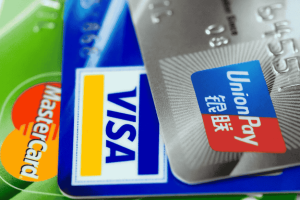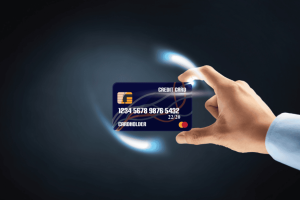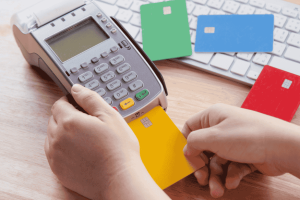Imagine Alex, a young professional juggling expenses in a bustling city. For years, Alex felt overwhelmed by monthly bills and spontaneous spending, never quite able to save for a dream vacation. After frequent financial stress, Alex decided to create a budget—one that wasn’t just a rigid spreadsheet, but a living plan tailored to real-life habits. Today, Alex not only meets monthly obligations but also enjoys saving for big dreams. This story reminds us that with the right approach, a budget can transform your relationship with money.
Understanding the Fundamentals of Budgeting

Budgeting is more than a list of numbers; it’s a systematic approach to taking control of your finances by knowing exactly where your money goes and planning for both short-term needs and long-term goals.
The Importance of a Personalized Budget
- Financial Clarity: Understand your income, fixed expenses, discretionary spending, and savings.
- Empowered Decision-Making: A budget gives you the power to allocate resources in a way that aligns with your values.
- Stress Reduction: The certainty of having a plan reduces financial anxiety and the risk of overspending.
- Goal Achievement: Whether it’s saving for a down payment, paying off debt, or building an emergency fund, budgeting turns dreams into actionable targets.
The Step-by-Step Process to Create a Budget That Works
Creating an effective budget isn’t about restriction; it’s about understanding your financial habits and designing a system that reflects your lifestyle. Here’s how to craft one that truly serves you:
Step 1: Assess Your Income and Expenses
Detailed Breakdown:
- Track Your Money: Start by recording every source of income—salary, freelance work, passive income—and list all expenses over a full month.
- Types of Expenses:
- Fixed Costs: Rent, utilities, subscriptions, loan payments.
- Variable Costs: Groceries, dining out, transportation, entertainment.
- Practical Tip: Use budgeting apps like Mint, YNAB, or even a simple spreadsheet to build a comprehensive picture of your cash flow.
Reflection: Understanding where every dollar comes from and goes is the foundation of a successful budget.
Step 2: Set Clear Financial Goals
Establish Short-Term & Long-Term Objectives:
- Short-Term Goals: Pay off a small debt, save for a weekend trip, reduce unnecessary spending.
- Long-Term Goals: Build an emergency fund, save for retirement, invest in education or property.
- SMART Goals: Ensure that your goals are Specific, Measurable, Achievable, Relevant, and Time-bound.
Action List:
- Write down 2-3 immediate financial goals.
- Identify 2-3 goals to achieve within the next 5-10 years.
- Prioritize goals and estimate the amount needed for each.
Step 3: Create Categories and Allocate Funds
Building Your Budget Categories:
- Essential Expenses: Housing, food, transportation, insurance, utilities.
- Discretionary Spending: Entertainment, hobbies, dining out, travel.
- Savings and Debt Repayment: Emergency fund, investments, paying off credit cards or loans.
Below is a sample table to help visualize your allocations:
| Category | Suggested Allocation (%) | Notes |
| Essential Expenses | 50% | Rent, utilities, groceries |
| Savings/Debt | 20% | Emergency fund, debt repayment |
| Discretionary Spending | 30% | Entertainment, hobbies, dining out |
Tip: Adjust the percentages according to your financial situation; for instance, if your fixed costs are high, you might need to modify discretionary spending.
Step 4: Develop a Plan for Monitoring and Adjusting
A budget isn’t static—it evolves as your financial circumstances change.
Ongoing Management Strategies:
- Regular Reviews: Set a monthly review meeting with yourself to update your spending habits and progress.
- Adjust If Necessary: If you notice overspending in one category, adjust by cutting back in another.
- Automation: Use banking tools to set up automatic transfers to your savings or bill payments to keep on track.
Use of Technology:
- Budgeting Apps: These apps automatically categorize your expenses and provide insights.
- Spreadsheets: If you prefer a detailed manual approach, Google Sheets or Excel can be customized to track your data precisely.
- Digital Alerts: Set notifications for bill due dates, overspending alerts, and monthly progress updates.
Innovative Budgeting Techniques: Beyond the Traditional Approach

Let’s explore some creative methods that add depth and flexibility to your budgeting strategy:
The Envelope System – Reimagined for the Digital Age
Originally designed using cash envelopes for each category, the concept is now available in digital form. Allocate digital “envelopes” in your banking app for groceries, entertainment, and other expenses. Once an envelope is empty, no more spending in that category–an intuitive way to manage funds.
Zero-Based Budgeting: Giving Every Dollar a Purpose
With zero-based budgeting, every dollar of your income is allocated to specific expenses or savings goals until nothing is left unassigned. This method ensures that you consciously decide how each dollar is used, which often leads to more deliberate spending decisions.
How to Apply Zero-Based Budgeting:
- List every income source.
- Determine every expense category.
- Allocate funds until your income minus your expenses equals zero.
- Revisit any surplus or deficits at the end of the month and reassign accordingly.
The 50/30/20 Rule: Simplify Without Sacrificing Flexibility
A well-known guideline that suggests:
- 50% of income goes to essentials.
- 30% to discretionary spending.
- 20% to savings or debt repayment. This approach provides a simple framework while allowing enough flexibility to adapt to your unique lifestyle needs.
Tips and Tricks: Common Pitfalls and How to Avoid Them
Budgeting is a journey, and knowing the common challenges can help you overcome them with proactive strategies.
- Impulse Spending:
Maintain a waiting period for non-essential purchases. If you see something you like, give yourself 24 hours to decide if it’s really necessary. - Underestimating Expenses:
Always overestimate variable spending slightly. This cushion helps prevent overspending when unexpected costs arise. - Neglecting Irregular Expenses:
Plan for those one-off costs like car maintenance, annual subscriptions, or holiday gifts by setting aside a small amount each month. - Sticking Rigidly to a Plan:
Life happens. Adjust your budget dynamically, and don’t feel discouraged if you need to make changes. Budgeting is about evolution, not perfection.
Real-Life Case Studies: Budgeting Success Stories
Case Study 1: Emily’s Journey to Debt-Free Living
Emily was drowning in credit card debt and had no clear savings plan. By adopting zero-based budgeting, she meticulously tracked her spending, cut unnecessary expenses, and delegated every dollar toward her debt. Within a year, she managed to clear a significant portion of her debt while simultaneously building an emergency fund. Her story demonstrates that with determination and a clear strategy, budgeting can be the key to a fresh financial start.
Case Study 2: Michael’s Balanced Lifestyle
Michael, a freelancer from Kuala Lumpur, had a fluctuating income. He started using the 50/30/20 rule to ensure he always saved a portion of his earnings, even when his income dipped. By adjusting his discretionary spending during lean months and ramping it up when times were good, Michael maintained a steady financial lifestyle without feeling restricted. His approach highlights the flexibility required for those with irregular incomes, proving that budgeting can adapt to various financial rhythms.
Integrated FAQs: In-Depth Answers to Save You Time
Q: How often should I update my budget?
A: At least once a month! Regular reviews help you catch any discrepancies, adjust for unexpected expenses, and stay on target with your goals.
Q: Can I stick to a budget with an irregular income?
A: Absolutely. Techniques like zero-based budgeting or the 50/30/20 rule are adaptable for freelancers and contract workers. Building a buffer can also help manage the ups and downs of variable income.
Q: What tools can simplify tracking my expenses?
A: Budgeting apps like Mint, YNAB, or PocketGuard make it easy to categorize spending and set alerts. For those who prefer manual control, customizable spreadsheets in Excel or Google Sheets work wonderfully.
Q: Is it necessary to cut out all non-essential spending?
A: Not at all. A healthy budget allows some discretionary spending, ensuring you still enjoy life. The key is to be aware of where your money is going and to plan for occasional treats without compromising your long-term goals.
Final Reflections: Your Budget, Your Future

Crafting a budget that actually works for you is about more than strict numbers—it’s about building a sustainable financial lifestyle that adapts to your personal needs and dreams. By evaluating your income, setting realistic goals, and using tools that simplify the process, you can transform budgeting from a daunting task into a powerful asset.
Remember, budgeting is a dynamic tool. Revisit and refine your plan as your circumstances change—whether it’s a new job, a big purchase, or shifting life priorities. With patience and persistence, every small saving contributes to a brighter financial future.









